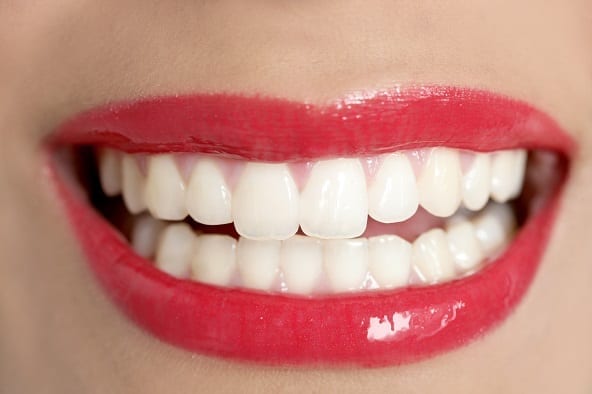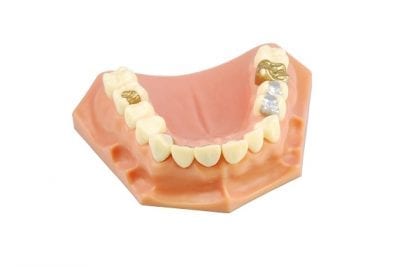Pulling or extracting teeth that have been damaged is not the only way a dentist can treat your dental problems. He can also fix your cavity the same way that the city fixes the potholes on streets: by putting filling in those holes. In the dental professional’s case, he first needs to drill the decayed portion or material of the tooth away so that the filling can fit better, while also staving off any loose foundation that can lead to the filling popping out of the cavity.
Dental fillings are used in order to repair broken, cracked, or holey teeth that have been worn down after extensive misuse and abuse through improper dental hygiene, tooth grinding, or nail biting.
What Are the Steps Involved in Filling a Tooth?

Here are the steps involved when it comes to filling out a decayed tooth or a tooth that’s suffering from dental caries.
- Go to Your Nearest Dentist: Have them check out the extent of the dental caries so that they can decide whether the tooth can still be saved by putting in tooth filling or if it can only be salvaged by getting a crown or root canal.
- Straight to the Dentist’s Chair: You’ll be told to lie on the dental chair. The dentist will position the saliva ejector in your mouth and prepare the tooth or teeth in question by cleaning it or them up.
- Application of the Anesthetic: Even though you’re not going through an extraction procedure, you’ll still be given a local anesthetic to numb the area around the tooth that will be operated upon with drills and/or other dental tools.
- Drilling Out the Decayed Material: An air abrasion instrument, laser, or outright drill will then be used to remove the decayed material, thus leading to a snazzier and smoother fit with the filling material. The instrument that will be used depends on the dentist’s expertise, investment, training, and comfort level.
- Probing the Area for Filling Fitting: Afterwards, your dentist will test or probe the drilled area to determine if the decay has been completely taken care of. It’s an unsteady surface for the filling to stick itself in, after all. It should be removed like sand and grit on a rough surface.
- Cavity Cleaning to Remove Debris and Bacteria: The cavity left after the decay has been drilled out will be further drilled and washed away to ensure that no debris and bacteria are left there.
- Liner Insertion: If the decay or cavity is deep enough to be near the root, the dentist might insert a liner composed of composite resin, glass ionomer, or some other material for the sake of nerve protection.
- Putting in the Filling Itself: The filling should then be put on the rest of the cavity like cement or asphalt over a pothole. It should be applied in layers. The filling could be tooth-colored (like composite or ceramic fillings) or it could be a mercury amalgam.
- Curing the Filling: A special light is used to cure or harden each layer after it’s applied. So the dentist essentially puts up one layer, cures it, and then repeats the process until the whole tooth is fully filled.
- Polishing the Filling After It’s In: After it’s in, polishing and sanding the filling should follow to make it less inconspicuous and fit better with the tooth it’s attempting to complete.
What Types of Filling Materials Are Available?

You can avail of several dental filling material variants. You can fill teeth in with tooth-colored composite resin, plastic, silver amalgam (made of mercury mixed with copper, zinc, tin, and silver), porcelain, and gold. You can also avail of glass ionomer filling, which contains glass particles. This filing is used in ways similar to composite resin fillings.
Determining the best filling for you depends on your insurance coverage, your dentist’s recommendation, the cost of filling material, and the extent of the decay.
- Cast Gold: Cast gold fillings are durable and can last you at least 10-15 years or more. They don’t corrode from saliva or bacterial acids. They’re aesthetically pleasing to some patients compared to silver amalgam fillings because they make your pearly whites look like jewelry. However, some might have a different opinion. Patients might prefer tooth-colored fillings that are hard to distinguish from the original tooth over colored or shiny fillings that stand out too much. They’re also quite expensive for obvious reasons.
They can cost up to 10 times more than their silver amalgam counterparts and significantly more compared to composites. You might also need additional dentist visits in order to get them done, usually at least twice per tooth. Galvanic shock can also occur if a gold filling is placed next to a silver amalgam filling. If you’ve already filled your other teeth with amalgam, it’s best that you don’t add gold there because the interaction of saliva and the metals can cause an electric current to form. However, this is a rare phenomenon.
- Silver Amalgams: Silver fillings also last about 10-15 years, going head-to-head with their gold counterparts. Furthermore, they can definitely last longer than their tooth-colored composite counterparts. They’re also quite strong, able to withstand chewing forces from your mandible through their metallic toughness or durability, even if you place them on molars (where the chewing is strongest). Some of them are even less expensive than composite fillings.
However, their aesthetics have been typically described as poor. Although aesthetics is subjective, having dull gray or black filling over your white to off-white teeth can be quite obvious compared to shiny gold or tooth-colored fillings. It also requires dentists to remove more parts of the tooth to allow enough space to hold the amalgam filling. The surrounding tooth structure can suffer from a grayish hue due to the presence of the amalgam filling.
Although teeth expand and contract with hot or cold liquids, causing them to fracture, amalgam fillings can go through a wider degree of contraction and expansion. This may lead to higher crack or fracture incidents.
Roughly one percent of dental patients are allergic to mercury in amalgam restorations. What’s more, low levels of the mercury within the amalgam are released in vapor form, which can be inhaled and absorbed by the lungs. This is why mercury amalgam removal services are available in many dental clinics even though the Food and Drug Administration or FDA considers the filling safe for both children (six years old and above) and adults.
- Tooth-Colored Composites: In aesthetic terms, tooth-colored composite fillings can’t be beaten. This is because they can easily match the color or shade of your existing teeth. They’re considered perfect for filling in front teeth or other visible parts of your teeth. However, because they’re weaker than gold and silver fillings, tooth-colored composite fillings are usually not advised for molars at the back of your mouth, where the biting and chewing forces are the strongest.
Aside from being used for decay filler material, composite fillings can also be applied in repairing worn, chipped, or broken teeth, as they are far more versatile than their metallic counterparts. Compared to amalgam, less tooth structure needs to be drilled away when you’re using tooth-colored composites because of their amazing bonding capabilities. All that the dentist needs to do is remove the decay and prepare the filling instead of chipping off healthy portions of the tooth being operated upon.
While this may sound good, take note that composite fillings lack durability. They wear out sooner than amalgam fillings. They also pop out more regularly, requiring reapplication and further destruction of the tooth. They typically last for about five years, compared to five to 10 years in the case of amalgams. What’s more, they might not last as long as amalgam fillings because of the pressure of chewing. They’re also not advisable for use on particularly huge cavities. Putting composites into place also usually take up to 20 minutes longer compared to their amalgam counterparts.
Like gold fillings, you might need additional visits to fix your composite fillings, especially if they’re used on onlays or inlays. These fillings are also prone to chipping off the tooth depending on their location or placement. They can also be quite expensive, costing about twice what amalgams cost, but not as expensive as cast gold fillings.
- Ceramics and Glass Ionomer: These are the two other tooth-colored fillings available aside from composite resin fillings. Ceramics are filings that are usually made of porcelain. Their main advantages include the fact that they’re more abrasive and more resistant to staining compared to composites. Their material makes them last for more than 15 years and they cost about as much as cast gold fillings. They are one of the toughest and most durable fillings in existence.
On the other hand, glass ionomer fillings are made of a specific type of glass material mixed with acrylic. It’s usually used for fillings below the gum line as well as pediatric dental fillings that still require drilling. They release fluoride that assists in dental protection from tooth decay.
The downside of glass ionomer fillings is that they’re normally weaker than composites, making them more susceptible to fracture and wearing down even though they last about the same amount of time (around five years at the most). The newest versions of this material feature an improved and lengthier lifespan that makes them about as good as composites, especially when they’re placed in the correct areas of the tooth.
What Are Indirect Fillings?

Indirect fillings are like tooth-colored composites save for the fact that they’re synthesized in a dental lab. They require two clinic visits from the patient before they’re placed because of the synthesis process that takes a few days. This filling type is considered when there isn’t enough tooth structure left to support a filling but the damage isn’t so extensive that a crown is called for. It involves the following steps:
- On the initial appointment, the old filling is removed.
- The shape of the tooth being repaired and the surrounding teeth are recorded through a cast impression or a digital scan.
- The dental laboratory then receives the impression that they’ll use to synthesize an indirect filling.
- A temporary filling is then placed for the sake of protecting the tooth while the restoration is being synthesized.
- On the second appointment, the temporary filling is taken off. Then, the dentist checks the fit of the restoration. If the fit is suitable, it will be permanently cemented into place.
- If the fit is unacceptable for some reason, another appointment is scheduled, a new impression is made, a new temporary filling is put in, and a new restoration is synthesized. The process is repeated until successful.
There are two types of indirect fillings:
- Inlays: These fillings are similar to composites but they work using bumps or cusps on the tooth’s chewing surface.
- Onlays: More extensive and complex than their inlay counterparts, onlays cover one or more cusps. They’re also known as partial crowns because of their extra filling support.
Compared to traditional fillings, including the toughest ones made of porcelain, inlays and onlays last significantly longer. In fact, they can last for up to 30 years. They can also be made of gold, porcelain, and composite resin. However, they have downsides such as weakening the underlying tooth structure. However, they do this in a much lower degree compared to regular fillings.
Direct Inlays and Onlays
Direct inlays and onlays are other types of inlay/onlay that follow similar procedures and processes as their indirect counterparts. Nevertheless, there’s a difference between them, and it’s the fact that direct inlays and onlays are made in the dental office itself and can be placed in your mouth in one visit rather than requiring two or more visits. This type of inlay/onlay also has variants. The best ones for your tooth cavity or cavities depend on how much of the tooth is left and cosmetic concerns (if any) after placement.
In Summary

In summary, the tooth filling process involves putting in the anesthetic, drilling away the diseased or decayed material from the cavity, putting in the filling by layers, curing each by layer as well, and ultimately trimming the filling to make it more uniform and a perfect fit with the tooth. Once the excess material is trimmed, the tooth is then polished to get the final restoration results. Fillings are best used to treat teeth that are beginning to get decayed. However, if dental issues become too severe for even an indirect filling to fix, then it’s usually better to insert a crown or do a root canal or endodontic procedure.
Thantakit International Dental Center is Thailand’s longest established dental center. Situated in Bangkok, our clinic is renowned all over the world as a destination for world-class dentistry, with many of our patients flying to us from Australia.
Please contact us today to get a FREE dental consultation.












